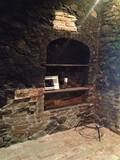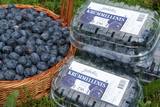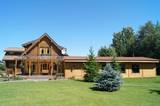| Нo | Название | Описание |
|---|---|---|
|
На маршруте встретятся уникальные и в Латвии до сих пор невиданные пейзажи! Внушительный обрывистый берег Балтийского моря, протяженностью почти двадцать километров, начинается несколько километров севернее Павилосты и заканчивается недалеко от Ошвалки. Берег впечатляющей и необычной формы простирается на участке от Странте до Улмале. Маршрут на всем протяжении ведет по бывшей западной границе «Железного занавеса», так как в советское время берег Балтийского моря был милитаризованной и людям «со стороны» недоступной территорией. В настоящее время также еще можно увидеть остатки бывших армейских объектов и старые танковые дороги в прибрежных дюнах. В окрестностях Вентспилса и Ужавы на протяжении нескольких километров простираются самые большие биотопы серых дюн в странах Балтии. Это необычные ландшафты, которые редко можно увидеть в других метах Европы. Здесь можно пройти более десяти километров и не встретить ни одного человека. Maršruta informācija no Latvijas Lauku foruma |
||
|
Atrodas netālu no Biksēres muižas, blakus muižas parkam. Ozolkalna klēts saimniece Līga Kuba aušanas prasmes pirms pāris gadiem apguvusi Sarkaņu amatu skolā. Šeit radusies iecere par privātas aušanas darbnīcas izveidi, kas arī īstenota. Saimniece savas aušanas prasmes nodod jebkuram interesentam. Apmeklētāji var iegādāties šeit darinātos suvenīrus. |
||
|
Atpūtas vietā ir apskatāmas 370 no koka veidotas skulptūras. Ir izveidoti 5 labirinti- 630 m garš pikants labirints ar “pipariņu” tikai pieaugušajiem, tulpju meditatīvais labirints, “Šausmu labirints”mežā, bērniem- 25 m garš labirints ar maldīšanos upenēs “Tracis”, zaru labirints “Dižputna ligzda”. 60 dažādas lielformāta brīvdabas spēles un atrakcijas. Dabas taka “Putnu iela”, kurā apskatāmi Latvijas dobumperētāju putnu būrīši. |
||
|
This is the highest church tower in Latvia, and from it you can see views of the Alūksne highlands. The view to the South is particularly impressive.
|
||
|
Народный дом расположен в здании, построенном в середине 18-го века, в котором находился трактир. Для сохранения этого более чем 135-летнего здания культурно-исторического наследия в 2011 году в нем были проведены масштабные реставрационные работы. В настоящее время в Народном доме устраиваются различные мероприятия, для посетителей открыт выставочный зал и краеведческое пространство - «Комната старинных вещей». |
||
|
Город ветра, янтаря и музыкантов. В письменных источниках Лиепая впервые упоминается в 1253 году. Расцвет города как торгового порта начался уже в конце XVI века. Особенно знаменательным было правление Курземского герцога Екаба и Фридриха Казимира, когда через Лиепайский порт обеспечивался экспорт и импорт товаров из Литвы и Курземе. На месте засыпанной песком дюны реки Ливы был прорыт канал, создана пристань для кораблей. Рост города продолжался и в XVIII веке, после Северной войны и эпидемии чумы. Когда в 1795 году Курземе присоединили к Российской империи, Лиепайский порт стал одним из важнейших стремительно развивающихся западных портов империи. В конце XVIII – XIX вв. Лиепая одновременно становится излюбленным местом отдыха аристократии Санкт-Петербурга. В конце XIX века начались работы по возведению крепости и строительству военного порта. Город приобрел военно-стратегическое значение. Лиепая сильно пострадала во время Второй мировой войны. В 1967 году в Лиепае приостановил работу морской торговый порт, и город стал закрытым городом, где военный порт стал городом в городе. Сегодня военный порт и связанное с ним предложение является одним из востребованных продуктов туризма Латвии. |
||
|
Учебные мастерские и домашние кафе распространены по всей Эстонии, но преимущественно они встречаются в регионе Пейпсимаа. Во время занятия в мастерской участники с помощью руководителя готовят 3-4 блюда, которые потом все вместе дегустируют. Акцент делается на продуктах, встречающихся в окрестностях Пейпсимаа, и полюбившихся рецептах. Учебные мастерские в основном проводятся под открытым небом, а еду готовят на кострах, используя котлы и самоваром. Зимой мастерские проводятся даже на льду озера Пейпус. |
||
|
Находится в центре Пиньки, на улице Ригас. Посвящен событиям 1919-го года, когда 22-го мая после почти двухмесячного бездействия бригада полковника Балодиса пошла в наступление на Ригу для освобождения столицы от большевиков. Поддержку бригаде Балодиса должны были оказать немецкий ландесвер и немецкая «Железная дивизия», а также отделение русского князя Ливена. Первый памятник был открыт президентом Латвии Карлисом Улманисом 23-го мая 1939-го года. В 1951-м году советская власть его уничтожила, а в 2003-м году была установлена копия памятника (скульптор Я. Бриедис, копия О. Скарайниса). |
||
|
Кафе Bastions расположено в историческом центре Валмиеры ‒ на бывших средневековых укреплениях. Здесь предлагается широкий выбор блюд латышской кухни, подходящих и для завтрака, и для обеда, и для ужина. Кафе сотрудничает с местными крестьянами и производителями сельскохозяйственной продукции. Летом здесь можно пообедать на уличной террасе, с которой открывается красивый вид на озеро Дзирнаву. |
||
|
This tour will take you on a walk through the Curonian Spit from Nida to Smiltynė. The Curonian Spit National Park is located on a long, sand-dune spit that separates the Curonian Lagoon from the Baltic Sea coast. A sand beach of ~50 km is running on the western side of the dune spit, while the shore of the Curonian Lagoon is shallow and characteristic of ridged bays overgrown with reeds. The Baltic Coastal Hiking Route starts in the centre of Nida near the port. In Nida, it runs along the Curonian Lagoon promenade, offering beautiful views of the spacious waters. From Nida to Bulvikio Cape, the Baltic Coastal Hiking Route winds along small forest paths leading up and down pine-covered dunes; in the village of Preila, the trail runs along the promenade of the lagoon. Between Pervalka and Juodkrantė, the Baltic Coastal Hiking Route leads along a beautiful, sandy beach. You can take the Raganų kalnas (Hill of Witches) trail in Juodkrantė. The route alternates between the Baltic Sea coast, the dunes and the Curonian Lagoon until it finally reaches the ferry, which will take you to Klaipėda. |
||
|
Находится в старой школе Унгурмуйжи, которая вместе с господским домом и парком создает уникальный культурно-исторический памятник. Латышская кухня: Картофельные блины с копченым мясом и брусничным вареньем, суп из лисичек, овощной суп, букстиньпутра с мясной подливкой, форель Браслы, свиное жаркое с ревеневым соусом, буберт, десерт с ягодным соусом. |
||
|
Новаторские и вкусные продукты из конопли и гречки ‒ и вкусны, и полезны для желудка. |
||
|
В красивом месте недалеко от озера Кала на склонах холмов растет малина, клубника, клюква и кустовая черника. В сезон можно собрать ягоды, приобрести и продегустировать продукцию, а также записаться на познавательную экскурсию. |
||
|
Городище Спринги pасположено недалеко от города Резекне и
вызывает интерес своеобразной формой. Археологический
памятник местного значения.
|
||
|
Ķurmrags is one of the most distinct capes along the Vidzeme shore of the
|
||
|
Находится в построенном в 1911 году здании молочного комбината «Страупе». Производит молоко, кефир, пахту, сметану, сливки, творого, сладкие творожные крема, масло, йогурт и сыр. Продукцию можно приобрести в фирменном магазинчике (рядом с предприятием), где также можно купить сыры, произведенные партнерами по сотрудничеству – АО «Смилтенес пиенс», и ООО «Латвияс пиенс». Одно из пяти латвийский предприятий, которые имеют право производить традиционный продукт, включенный в схему «Гарантированной традиционной особенности» ЕС – сыр «Яню». Продуктам присвоены знаки «Зеленая ложечка» и «Латвияс лабумс». Для групп организуют дегустации и предлагают ознакомиться с деятельностью кооператива по производству и переработке молока. |
||
|
Atrodas Lielvārdes parkā pie Rumbiņas ietekas Daugavā. Līdzīgi kā citur, arī šeit 13. gs. pirmajā pusē bīskapa pili cēla nodedzinātās lībiešu koka pils vietā. Mūra pili nopostīja Livonijas kara laikā - 1577. g. Tikai 1987. g. notika drupu konservācija. Lielvārdes parka veidošanu uzsāka 19. gs. beigās Lielvārdes muižas barona Artura fon Vulfa vadībā. Sagaidot eposa „Lāčplēsis” simtgadi tajā izvietoja sešpadsmit no ozolkoka veidotas skulptūras (t.s. Skulptūru dārzs) (autori V. Ansavs, P. Mellis, Ē. Delpers, A. Dauvarte). Aiz pilsdrupām Daugavas krastā ir stāva krauja ar dolomīta iežuatsegumu. Līdz HES ūdenskrātuvei var nokļūt pa kāpnēm. Lielvārdes muižas pils līdz mūsdienām nav saglabājusies. |
||
|
Этот тур объединяет местные традиции виноделия со старинным шармом деревни с ее несколькими средневековыми замками и баронскими поместьями. Маршрут ведет в Сигулду, где на крутых берегах реки Гауя расположены три замка. Посетите средневековые замки Сигулду и Турайду, а затем отправляйтесь в поместье Кримулда, чтобы отведать их вина. Вас также ждет посещение семейного винодела в Сигулде. На следующий день по плану экскурсия в историческую деревню Лигатне и дегустация местных вин в песчаной пещере, типичной для этой местности. Далее на маршруте впечатляющий средневековый замок в Цесисе и поместье Унгурмуйжа, единственный сохранившийся образец архитектуры деревянного барокко в Балтии. Проведите ночь в бывшем поместье Дикли, где сейчас находится высококлассный отель. На следующий день маршрут поведет вас вдоль побережья моря, где расположен музей самого большого в мире лгуна – Мюнгхаузена. Вы также можете прогуляться вдоль песчаного пляжа. Затем посетите ферму местного винодела и отведайте его разнообразные вина, а затем отправляйтесь в поместье Бирини на обед и прогуляйтесь неспешно по его большому парку перед отъездом обратно в Ригу. |
||
|
Гостевой дом Aizvēji находится всего в 50 км от Риги и в 200 м от песчаного берега Видземского побережья – в тихой, живописной, ухоженной местности. Комплекс для проведения торжеств и отдыха, теннисный корт; накрывают столы для мероприятий. Бревенчатый дом с двумя банкетными залами и уютными комнатами. Летнее кафе расположено отдельно от гостевого дома. |
||
|
Одни из самых крупнейших производителей продукции козоводства в Латвии. Разводят ~ 160 чистопородных коз (Альпийская, Англо-нубийская, Белая немецкая благородная) и домашних кабанов (для племенной работы). Экскурсия и участие в выпасе коз. Начиная с марта – возможность наблюдать за козлятами. Дегустация нескольких сортов сыра, демонстрация доения (около17:00). Предлагается дегустация и приобретение мясных консервов. В продукты не добавляют консерванты! |
||
























